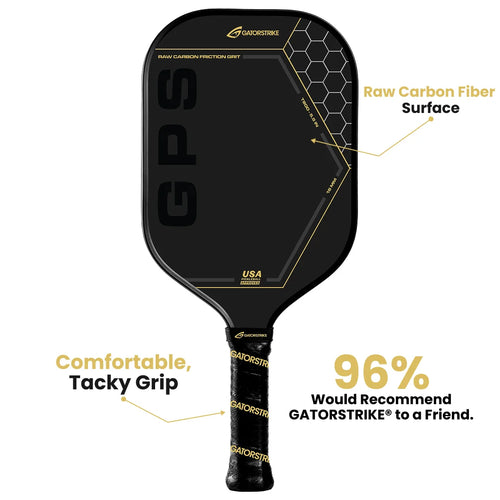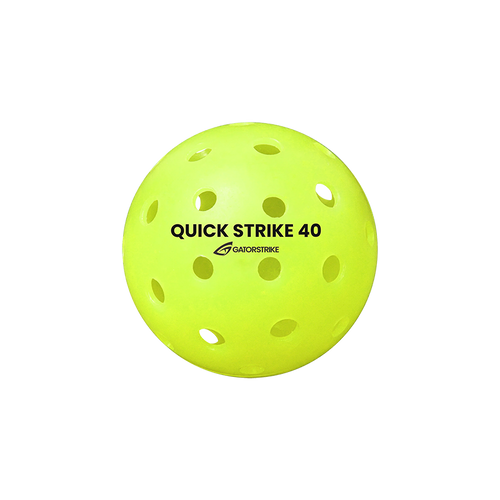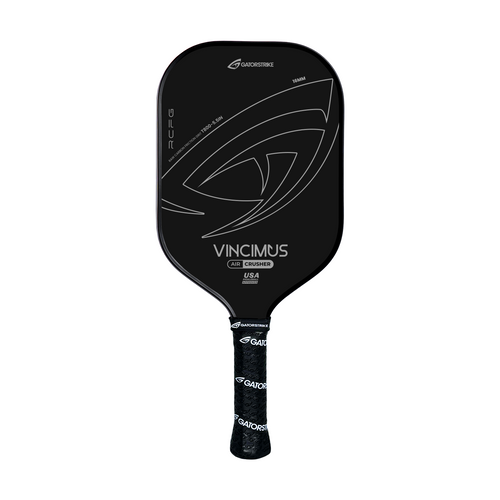
The Paradox of Simplicity: Why Less is More in Pickleball
Share
Pickleball, with its easy-to-learn rules and accessible nature, might appear deceptively simple. Yet, as players ascend the ranks of skill and strategy, a curious paradox emerges: the most effective plays often hinge on simplicity. In a sport where finesse trumps force and control outweighs chaos, mastering the art of "less is more" can transform your game.
This article explores how embracing simplicity can lead to smarter decisions, cleaner execution, and greater success on the court.
The Allure of Complexity
For many players, the temptation to overcomplicate their game is hard to resist. Fancy spins, high-risk smashes, and audacious angles can seem like the fast track to victory. While these advanced techniques have their place, they often lead to inconsistency and unforced errors, especially for those still refining their fundamentals.
Why Do Players Overcomplicate?
- Desire to Impress: The thrill of executing a flashy shot can overshadow the practicality of a basic one.
- Overthinking Strategy: Trying to predict every opponent's move can lead to analysis paralysis.
- Mimicking Advanced Players: Aspiring to replicate elite-level tactics without the foundation to support them often results in frustration.
The Power of Simplicity in Pickleball
Simplifying your game doesn’t mean playing passively; it means playing intelligently. Simplicity creates consistency, maximizes efficiency, and minimizes unnecessary errors.
1. Reliable Serves and Returns
A strong, straightforward serve places the ball in play without inviting risk. Similarly, returning with a focus on depth rather than complexity gives you control from the start.
- Why It Works: High-percentage plays force opponents to make the first mistake.
- Pro Tip: Aim for the middle of the court on returns to reduce angles for your opponents.
2. Mastering the Third Shot
The third shot drop epitomizes simplicity. It’s not about power; it’s about control, precision, and neutralizing your opponent’s advantage.
- Why It Works: A well-placed drop shot resets the rally, allowing you to approach the net and dictate the pace.
3. Strategic Dinking
Dinking—those soft, controlled shots at the net—relies on patience and placement rather than speed or spin.
- Why It Works: It creates opportunities by pressuring your opponents into mistakes while keeping you in control of the rally.
The Mental Side of Simplicity
Simplifying your approach on the court can also have profound mental benefits.
- Reduces Stress: Fewer decisions mean less cognitive load, allowing you to focus on execution.
- Enhances Confidence: Consistent, effective plays build momentum and self-assurance.
- Improves Focus: Simplicity narrows your attention to the essentials, keeping distractions at bay.
Training for Simplicity
Adopting a "less is more" mindset requires intentional practice. Here are some drills to help you hone simplicity:
1. The Two-Shot Drill
- Objective: Practice a simple serve and return sequence repeatedly.
- Focus: Consistency and depth over power.
2. Target Dinking
- Objective: Place dinks into designated areas of the opponent’s kitchen.
- Focus: Control and precision over speed or spin.
3. Third Shot Reset Drill
- Objective: Execute third shot drops with a partner repeatedly.
- Focus: Smooth motion and soft landings in the opponent’s kitchen.
When to Embrace Complexity
While simplicity is a cornerstone of effective play, there are moments when calculated risks and complex strategies are necessary. Advanced shots like lobs, spins, and angled drives can be game-changers when used sparingly and with precision. The key is knowing when to pull these tools from your arsenal without losing sight of your core strategy.
Case Study: Simplicity in Action
Consider a doubles match between two evenly matched teams. Team A, focusing on consistent serves, returns, and controlled dinks, steadily builds a lead. Team B, while capable of spectacular shots, frequently overhits and makes unforced errors. By the match’s end, Team A’s simplicity triumphs over Team B’s flashiness. This scenario underscores the value of a measured, methodical approach.
Conclusion: Finding Beauty in Simplicity
In pickleball, as in life, simplicity is often the ultimate sophistication. By focusing on high-percentage plays, refining your fundamentals, and cultivating patience, you can elevate your game while minimizing unnecessary risk.
So, the next time you step onto the court, remember: less truly is more. Embrace simplicity, trust your skills, and watch your pickleball prowess soar.

















